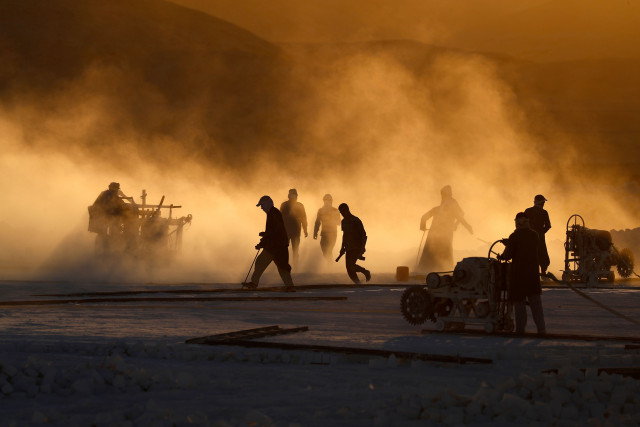SEZs: chasing success or failure?
A lot needs to be fixed when it comes to Special Economic Zones in Pakistan

PHOTO: AFP
As per the CPEC’s official website, the MoU and engagement agreement for the development of Rashakai SEZ in Khyber-Pakhtunkhwa was signed between the KP Economic Zones Development and Management Company and the China Road & Bridge Corporation in January 2018, while the joint venture agreement was signed in November 2018. Similarly, the groundbreaking for Allama Iqbal Industrial City in Faisalabad had been done earlier.
Consent of the board of approvals is one of the early steps in the SEZs’ development cycle, while other steps like development agreement or ground-breaking come way later. Clearly, we are re-celebrating some of the past work here.
But even more alarmingly, the focus of the Board of Investment (BoI) seems to be on chasing numbers that can make headlines, which is clearly misplaced. For them, the SEZs are brick-and-mortar infrastructure with a few carrots thrown at the investors. And the more they can approve, the better.
However, this flawed understanding, combined with poor execution capability, results in poorly developed or half-complete industrial estates, where investors sometimes have to struggle for clean land titles or go through cumbersome procedures and long delays to get the promised incentives.
Before approving new SEZs, perhaps the PM should ask how well the government has done on the existing SEZs.
There are a few exceptions like Value Addition City in Faisalabad or Khairpur SEZ in Sindh with better infrastructure, but these are fully colonised with no vacant plots. Most others like the Quaid-e-Azam Apparel Park and the Hattar SEZ remain mostly barren or sparsely colonised. In almost all cases, the provincial governments struggle with the federal government entities when it comes to provision of utilities like electricity and gas or doing rounds of approvals with the BoIs.
In most SEZs, the businesses find it hard to transfer the land title in their name before they can collateralise it and get financing from the banks. The land prices in many cases such as Korangi are prohibitively high thanks to speculative buying. Although the government does have powers to evict any leaseholder in case of non-construction, in most cases the government itself is falling short of its promises and therefore finds it hard to hold the private enterprises accountable for their inaction.
Provision of these industrial plots at affordable prices is not a luxury but a basic necessity. The world has now moved on from simple land-allocation models to ‘plug-and-play’ SEZs, but we are still struggling with the basics.
Moreover, good quality infrastructure with all basic utilities, clean land titles, suitable pricing models and adequate security only create a functional industrial estate and not an SEZ. SEZs are primarily about business-friendly regulatory environment while incentives play a secondary role. There are countless examples of successful SEZs all around the world with efficient one-stop solutions, innovative contract enforcement models, negative lists and pre-approvals eliminating the red tape, and much more.
In Pakistan however, one-windows remain a farce, operating merely as collection points for applications, while the investors have to chase individual agencies and departments for approvals. Any new industry in an SEZ, for instance, has to get approval from respective provincial building control authority or local municipal government for approval of design that could take months. The respective SEZ authorities enjoy no delegated powers and instead act as mere intermediaries with the rent-seeking bureaucracy.
A lot needs to be fixed when it comes to SEZs. Let’s focus on fixing the existing SEZs first rather than chasing failures wrapped in headline-worthy numbers.
Published in The Express Tribune, March 10th, 2020.
Like Opinion & Editorial on Facebook, follow @ETOpEd on Twitter to receive all updates on all our daily pieces.















COMMENTS
Comments are moderated and generally will be posted if they are on-topic and not abusive.
For more information, please see our Comments FAQ